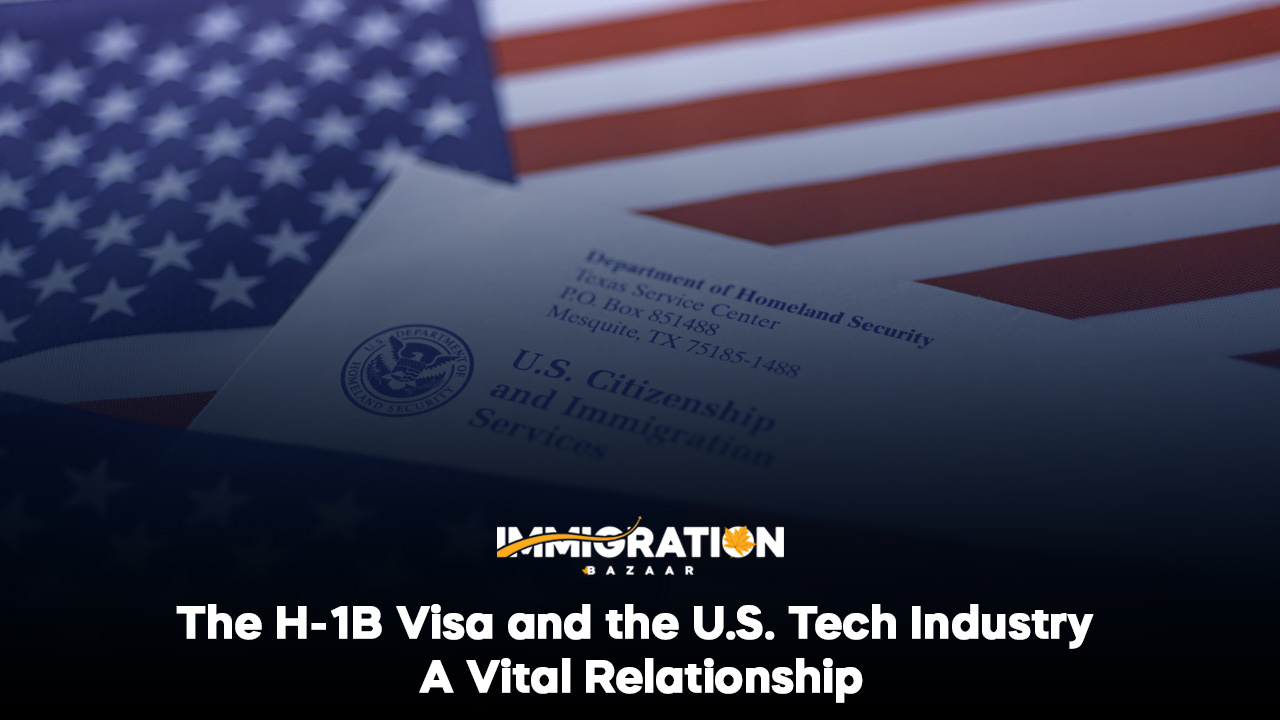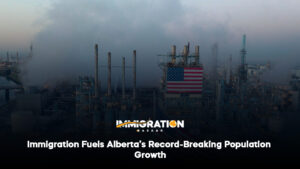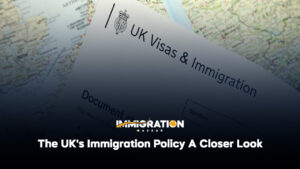The H-1B visa is one of the most sought-after work visas in the United States, particularly for professionals in tech, engineering, healthcare, and other high-demand industries. Every year, thousands of skilled workers, especially from countries like India and China, enter the U.S. on H-1B visas, contributing to the nation’s innovation, development, and economic growth. However, recent layoffs by big tech companies such as Google, Meta, Tesla, and others have thrown many H-1B visa holders into precarious situations, with the uncertainty of employment posing a significant challenge for their legal status in the country.
As a response to this issue, the United States Citizenship and Immigration Services (USCIS) has proposed new H-1B visa guidelines aimed at easing the situation for these workers, offering more options beyond the standard grace period that H-1B holders have when they lose their job. These new guidelines provide greater flexibility in terms of filing for a change in non-immigrant status, seeking employment authorization under compelling circumstances, and transitioning to other visa categories. This article will provide an in-depth look at these changes, their implications, and the broader context of visa policies in the U.S. and around the world.
-
The H-1B Visa and the U.S. Tech Industry: A Vital Relationship
The H-1B visa program was created to allow U.S. employers to hire foreign workers in specialty occupations that require technical or specialized knowledge. While the visa covers a wide range of industries, it is particularly vital to the U.S. tech sector. Companies like Google, Microsoft, Meta, and Tesla heavily rely on H-1B workers to fill roles in software development, data science, engineering, and more.
-
The Role of H-1B in Big Tech
The U.S. tech industry has long argued that there is a shortage of domestic workers with the necessary skills to fill certain high-tech positions. As a result, the H-1B program has become an essential tool for these companies to maintain their competitive edge globally. Over the years, H-1B visa holders have contributed significantly to the development of groundbreaking technologies and have been a key part of innovations in artificial intelligence, autonomous vehicles, cloud computing, and more.
-
Impact of Layoffs on H-1B Workers
Despite their critical role in the tech industry, H-1B workers are particularly vulnerable during periods of economic uncertainty. In 2022 and 2023, many U.S. tech companies, facing financial pressures and changes in business priorities, conducted mass layoffs. Thousands of H-1B visa holders found themselves unexpectedly without jobs, and due to the terms of the H-1B visa, their legal status in the country became uncertain. Under the existing regulations, H-1B workers have a 60-day grace period after losing their job to either find new employment, change their visa status, or leave the country.
The situation has created significant stress for many foreign workers, who not only face the risk of deportation but also struggle with navigating the complex U.S. immigration system. With this backdrop, the USCIS has proposed changes to make it easier for H-1B workers to stay in the country after losing their job and to provide additional pathways for maintaining their legal status.
-
New USCIS Guidelines for H-1B Visa Holders: Key Changes
The proposed USCIS guidelines are intended to address the challenges faced by H-1B visa holders who lose their jobs. These changes provide additional flexibility during the grace period and introduce new ways to maintain legal status and work authorization. Let’s break down the key components of these proposed guidelines.
-
Extended Grace Periods and New Options for H-1B Workers
Under the current rules, H-1B visa holders who lose their jobs have a 60-day grace period to find new employment or risk losing their legal status. This timeframe has often been criticized as being too short, particularly for those working in specialized fields where finding a new job can take longer than two months. The USCIS is now considering several options to give laid-off workers more time and opportunities:
- Change of Non-Immigrant Status: During the 60-day grace period, workers can apply for a change in their visa status, potentially switching to another type of non-immigrant visa (such as an F-1 student visa or B-2 tourist visa) that would allow them to remain in the U.S. temporarily while they explore other employment opportunities or educational options.
- Adjustment of Status Applications: Workers may also file an Adjustment of Status (AOS) application during this grace period if they qualify for a green card through other means, such as family sponsorship or the Diversity Visa program. This option allows workers to remain in the U.S. while their application is processed.
- Compelling Circumstances Application: Perhaps one of the most significant changes is the introduction of a Compelling Circumstances Application. If an H-1B worker can demonstrate compelling circumstances—such as economic hardship, personal emergencies, or other extraordinary situations—they may be granted a one-year Employment Authorization Document (EAD). This EAD would allow them to work in the U.S. while seeking new employment or adjusting their status.
- Petition to Change Employers: The USCIS has also proposed changes that would allow H-1B visa holders to start working for a new employer as soon as they file a petition to change employers, rather than waiting for the petition to be approved. This is a significant shift, as it would allow workers to transition to new jobs more quickly, without a prolonged gap in employment.
-
Flexibility in Employment Authorization
The one-year Employment Authorization Document (EAD) option for H-1B visa holders who file a compelling circumstances application is a major step forward. It would provide workers with much-needed breathing room to stay in the U.S. and continue working while they seek new job opportunities or explore other visa options. In addition, the ability to start working for a new employer as soon as a petition is filed provides greater flexibility and reduces the risk of visa expiration due to delays in the petition process.
This new policy aligns with the goal of maintaining the U.S.’s competitiveness in attracting global talent. It ensures that H-1B visa holders, who have already invested time and resources in building their careers in the U.S., do not have to abruptly leave the country simply because they lost their job during an economic downturn.
-
Implications for H-1B Visa Holders and the Tech Industry
These new guidelines offer a lifeline for H-1B workers, particularly those who have been impacted by the recent layoffs in the tech sector. By extending the grace period and providing additional options for maintaining legal status, the USCIS is acknowledging the critical role that these workers play in the U.S. economy and the challenges they face when navigating the immigration system.
-
Improved Job Security for H-1B Workers
For H-1B visa holders, the most immediate benefit of these changes is increased job security. By giving workers more time to find new employment and providing options for temporary work authorization, the USCIS is reducing the risk of deportation and allowing workers to stay in the U.S. for a longer period after losing their job.
This change is particularly important for workers in specialized fields, where job searches can be more time-consuming. The ability to start working for a new employer immediately after filing a petition also ensures that workers do not face long periods of unemployment while waiting for the USCIS to process their paperwork.
-
Impact on U.S. Employers
For U.S. employers, particularly in the tech sector, these changes could help ease some of the challenges associated with hiring and retaining foreign workers. The ability for H-1B workers to switch employers more quickly could create a more dynamic job market, where companies can hire talent more efficiently without worrying about lengthy visa approval processes.
However, these changes also raise questions about how the H-1B visa system might evolve in the future. The program has long been a subject of debate, with critics arguing that it allows companies to hire foreign workers at the expense of American workers. Proponents, on the other hand, point out that H-1B workers fill critical roles that are often difficult to staff with domestic talent.
-
Broader Context: Global Trends in Work Visa Policies
The changes to the H-1B visa program are part of a broader trend of countries around the world adjusting their work visa policies in response to changing economic conditions and labor market needs.
-
The U.S. and Competing for Global Talent
The United States has long been a destination of choice for skilled workers from around the world. However, in recent years, other countries have been stepping up their efforts to attract international talent. Canada, for example, has introduced several programs aimed at bringing in more skilled workers, including the Global Talent Stream and the Express Entry program, which offer faster processing times and more straightforward pathways to permanent residency.
The United Kingdom has also made changes to its visa policies in an effort to attract more skilled workers, particularly in the wake of Brexit. The introduction of the Skilled Worker Visa and the Graduate Visa has made it easier for international students and professionals to work in the UK, contributing to the country’s goal of becoming a global hub for innovation and technology.







